Hotline |
ICDs |
Build Status |
Build Loaded |
Wind Farms |
Radar Operations Center
Radar Product Improvement
The Radar Product Improvement (RPI) Team within the ROC Engineering Branch provides radar functionality and interoperability improvements between radar systems and Advanced Weather Interactive Processing System (AWIPS). RPI is physically located in Silver Spring, MD at the NWS Headquarters to foster coordination and interactions with AWIPS and other NWS enterprise systems and programs. The primary focus of RPI includes:
- Maintain awareness of advanced radar technologies; develop ConOps and requirements
- Maintain Radar Functional Requirements (RFR) document
- Manage tri-agency efforts to research, develop, and implement new radar capabilities and improvements to existing functionality
- Implement software changes on WSR-88D RPG (aka, NEXRAD), Terminal Doppler Weather Radar (TDWR) Supplemental Product Generator (SPG), and AWIPS
- Conduct radar-AWIPS-enterprise interoperability testing and operational troubleshooting
- Maintain and distribute Common Operations and Development Environment (CODE)
-
Support formal testing of operational software releases for WSR-88D, TDWR SPG, and AWIPS
- Provide operationally representative test environments, software versions, radar types, products from live / playback of radar data cases, and subject matter expertise (SMEs).
- Support ROC Hotline and AWIPS Network Control Facility (NCF) in troubleshooting operational issues
- Coordinate changes, monitors performance and troubleshoots radar Level-III product collection and dissemination
Near-Term WSR-88D Data Quality Improvement Projects
-
Updated SZ-2 algorithm and censoring thresholds - Build 22.0
- Improved coverage and quality of velocity and spectrum width (below 1.8 deg)
-
Staggered Pulse Repetition Time (SPRT) -- to replace mid elevation Batch cuts (1.8 to 6.4 degrees elevation)
- No purple haze for the polarimetric variables, and less for Doppler moments
- Less velocity aliasing with Extended Nyquist velocity up to 116 knots
- Reflectivity and polarimetric variables with lower variance
-
Clutter Environment Analysis using Adaptive Processing (CLEAN-AP)
- Four levels of filter aggressiveness based on clutter strength
- Improves ground clutter mitigation
- Required for Staggered PRT
-
Weather Environment Thresholding (WET) -- included with CLEAN-AP
- Reduces clutter filter induced bias when signal is dominated by weather
-
Hybrid Correlation Coefficient (HCC) Estimator - benefits low elevation cuts and weak signal areas on other elevations
- Quality improvement for CC at low SNR
Near-Term WSR-88D Weather Algorithm Improvement Projects
-
Hybrid Scan Estimator (HSE) - benefits low elevation cuts (below 1.5 deg)
- Blends polarimetric data from the surveillance split cut with better quality data from the Doppler cut
- Quality improvement for ZDR, PHI, and CC under certain conditions
- Data with low-to-medium SNR and high CC or wide spectrum width is improved most
-
Long Term Average Reflectivity
- Mitigate persistent contamination from wind turbines, highways, and ground clutter
-
Enhanced Melting Layer Detection Algorithm
- Enhance detection performance in the situations of low and sloping Melting Layers, and sharp snow / rain boundaries
-
Winter-Surface Hydrometeor classification Algorithm (WsHCA)
- Determine hydrometer class at the surface, and add classification of Ice Pellets (IP), Freezing Rain, and Snow/IP mix
-
Quantitative Precipitation Estimation (QPE)
- Refinements to the R(A) rain estimation approach
- Mitigation of the bright band contamination
- QPE in snow and mixed precipitation
Radar / NWS Enterprise Systems Interoperability Projects
- Improve performance of routine and one-time radar product requests from AWIPS (Build 21.0 deployed)
-
Update radar product suite disseminated on NOAAPORT/SBN and/or RPCCDS (implementation data)
- Add WSR-88D Rain Rate Classification Products (SCN 22-111). (Part of AWIPS 23.2.1)
- Remove Legacy Rainfall Products (SCN 23-09). September 2023 Update: The DPA/81 product was reinstated until a critical NWS application migrates to dual polarization QPE.
- Additional Lower Elevation sites (SCN 23-96): 1) with WSR-88D Build 22.0: KCRP (Corpus Christi, TX) 0.3 deg; 2) KPAH (Paducah, KY) 0.3 deg; 3) KPDT (Pendleton, OR) 0.2 deg; 4) KSGF (Springfield, MO) 0.2 deg. November 2023
- Additional Lower Elevation sites (SCN-24-09) with WSR-88D Build 22.1: 1) KBMX (Birmingham, AL) 0.4 deg; 2) KMOB (Mobile, AL) 0.2 deg. March 2024
- Begin dissemination of Hammond, LA WSR-88D (KHDC) products with 0.3 deg lowest elevation (SCN 24-11). March 2024
- Additional Lower Elevation sites with WSR-88D Build 23.0: 1) KEVX (Eglin AFB, FL) 0.3 deg; 2) KDOX (Dover AFB, DE) 0.3 deg. August - December 2024


